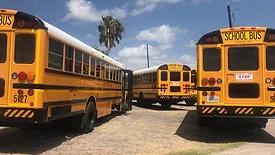Home » Keywords: » education security
Items Tagged with 'education security'
ARTICLES
Integrated Solutions
Enhancing school safety: Leveraging multi-sensor devices and video technology software
As education systems work to address security challenges with limited resources, data-driven video technology has emerged as an effective solution.
September 9, 2024
Security Talk
Inside The 2023 Security Benchmark Report
Security leaders can gain insights into industry trends by comparing The Security Benchmark Report data year-over-year.
November 2, 2023
Special Report
Robert Soderberg | Most Influential People in Security 2023
Vice President, Enterprise Safety & Security and Chief Safety, Security & Resiliency Officer | Adtalem Global Education
September 5, 2023
EVENTS
Webinar Sponsored Webinars Solutions by Sector Webinar
5/22/25 to 5/22/26
Contact: Amy Jackson
Proactive Crisis Communication
Sign-up to receive top management & result-driven techniques in the industry.
Join over 20,000+ industry leaders who receive our premium content.
SIGN UP TODAY!Copyright ©2025. All Rights Reserved BNP Media.
Design, CMS, Hosting & Web Development :: ePublishing














